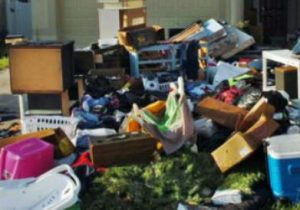 Offices and Factories more or less maintain a symbiotic relationship. Factories require offices to provide require paperwork and specifications of products without delay on a time to time basis, whereas offices require factories to deliver finished products or parts of the same on a stipulated time basis. One thing common in both would be the not-so-affluent management of waste.
Offices and Factories more or less maintain a symbiotic relationship. Factories require offices to provide require paperwork and specifications of products without delay on a time to time basis, whereas offices require factories to deliver finished products or parts of the same on a stipulated time basis. One thing common in both would be the not-so-affluent management of waste.
Environmental regulations have made it a must for any company to treat their waste before releasing it. They have also made provisions for planting trees and have come up with systems based on carbon credit. Despite all of these in place, there is another problem directly associated with wastes in these two areas – the problem of stunted productivity. How? You may ask.
To begin with, one of the goals of any enterprise would be to reduce the overall time that elapses between when a customer requests a product and when his demand is met, regardless of being paid for or not. This time is termed as ‘lead time’. The ever increasing customer expectations and demands need to have being met not only by the sales department but by the office as well.
Infact, it is a fact that almost 50-80% of the total lead time consumed is by Offices themselves. This is due to costing based on direct labor, absence of lead-time measurement in offices and lack of awareness of the impact and awareness of reduction in lead-time.
The Toyota Production System (TPS) highlighted the fact that how lead time reduction is a necessity not just in offices but in factories too. TPS highlighted the segments that involved in a lot of wastage in factories that included Overproduction, transportation, over-processing, scrap and rework and also myriad forms of time wastage. Another waste that was highlighted by the NIST MEP Lean Training and Texas Manufacturing Assistance Center is ‘Material and Natural Resources Waste’. Kaufman Consulting Group, during the development of ‘Schlipstraeger Wastes’ categorizes wastes in 4 different areas, namely people energy waste, process waste, information waste and people work waste.
A form of waste conducted by both offices and factories that is being completely overlooked by a vast majority of the globe is that of e-waste. The problem of e-waste is not just an escalating issue but a global crisis. The old and unused monitors, circuit boards, CPUs, magnetic storage forms and several others contain several harmful toxins and chemicals. These include lead, beryllium and mercury amongst others. This form of waste not only consumes a lot of office/factory storage space but is potentially hazardous for a working environment.
Wastes common to both factories and offices include factors such as overproduction, handling of defective material, maintenance of existing Machinery, Material & Natural Resources etc. Defects produced are simply thrown away whereas recycling them or refurbishing them can benefit both the company and the environment. As for the raw material, anything that cannot be reused, recycled or resold is essentially a waste.
Reclaiming of space becomes possible if such waste is cleared in their premises. During construction and renovating activities, massive waste is accumulated throughout the campus, including discarded carpets, defunct computer equipment and appliances and broken furniture.
Managing in detail every bit of rubbish around the workplace is quite a daunting task, if not tiresome and slightly off focused for the goals of the company. At such times it is advisable to heed to the assistance and suggestions by professional companies who in particular manage such tasks. Everything rubbish is an organization that stands as a professional Sydney rubbish removal servicein the Office and Factory waste sector. They also specialize in e-waste management and recycling services. They also provide furniture disposal Sydney service details of which can be seen at: http://www.everythingrubbish.com.au/waste-removal/furniture-rubbish-removal/furniture-rubbish-removal-sydney.







